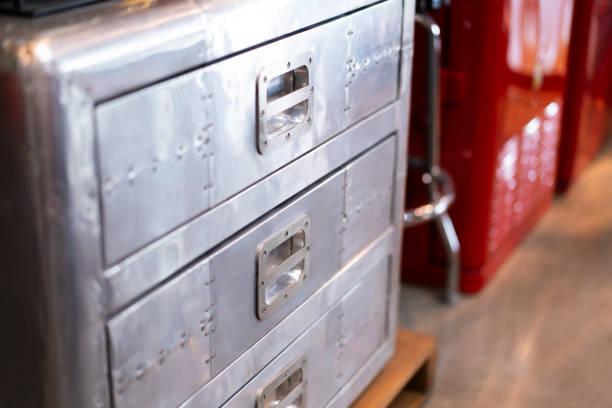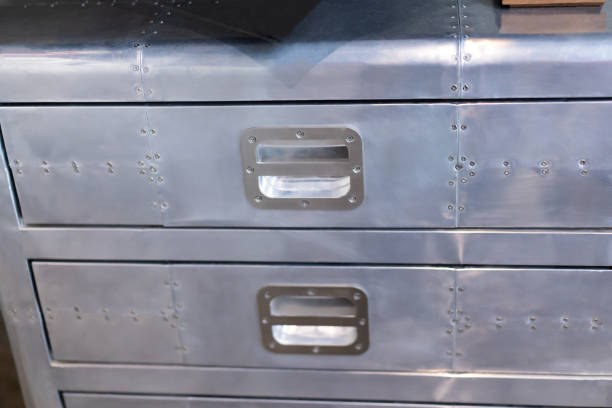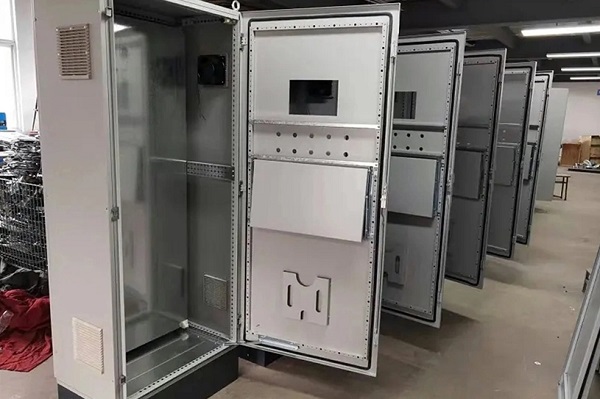In the context of the widespread application of modern industrial and information technology equipment, sheet metal cabinets are widely used in major fields such as power, communication, and automation as important carriers. To ensure that sheet metal cabinets can be safe, stable, and convenient in use, a scientific and reasonable design is particularly crucial. The following points are key issues that must be focused on in the design process of sheet metal cabinets.
The performance of the sheet metal cabinet largely depends on the materials used. Therefore, the material specifications should be clearly specified in the design drawings, with priority given to high-quality materials produced by reputable manufacturers to ensure that the materials have good strength, plasticity, and bending properties. In addition, the punching and folding rate of the material should be reasonably controlled to reduce the complexity of processing while satisfying the structural strength, enhancing the feasibility of the design.

When designing sheet metal cabinets, it is necessary not only to ensure their functionality and safety but also to reduce production costs as much as possible and improve cost-effectiveness. By optimizing the structure, selecting standard sizes, and streamlining unnecessary process steps, unnecessary resource waste can be effectively reduced, and the overall manufacturing efficiency can be improved.

The dimensions of the sheet metal cabinet should be designed based on the actual size of the equipment it accommodates, while also fully considering factors such as component layout, operation space, and maintenance convenience. Standardized and generalized data should be used in the design to reduce the complexity of dimension conversion and avoid processing errors. At the same time, the design should take into account the height, operation habits, and other factors of the users to ensure a humanized design.
The bending process in sheet metal processing is a key point in the design. The bending structure of the sheet metal cabinet must be designed based on the standard bending characteristics of the material. Especially when the material thickness exceeds 2.5mm, a process gap of 1t to 1.5t should be reserved in the design to avoid cracking or deformation of the material during bending.

The shell of the sheet metal cabinet not only serves an aesthetic function but also carries the responsibility of protecting the internal equipment. Therefore, the shell design should fully consider conditions such as ventilation, heat dissipation, dustproof, and waterproof during the equipment operation, while also considering the convenience of operation and maintenance. The shell's opening method, window design, lock configuration, etc., should reflect a people-oriented philosophy.
The core purpose of the sheet metal cabinet is to provide a stable working environment for the equipment; therefore, various technical requirements for equipment installation and wiring must be met. Designers should understand the equipment's cable interface location, power layout, communication connections, etc., in advance and reserve reasonable wiring channels and fixed positions in the drawings to ensure the system's accessibility and the convenience of later maintenance.

Designing sheet metal cabinets is a systematic project that must meet the requirements of functionality, safety, and economy while also considering structural rationality and aesthetic needs. Only by comprehensively considering materials, structure, dimensions, technology, and human-machine interaction from multiple aspects can the designed sheet metal cabinet ensure high quality, strong adaptability, and easy maintenance. It is recommended that enterprises prioritize experienced teams for drawing planning in the design and production stages to ensure that the final product stands out in the market competition.